Japanese street food, also known as yatai food, is a popular type of fast food in Japan. It is usually sold from small stalls or food trucks in bustling street markets, fairs, or festivals.
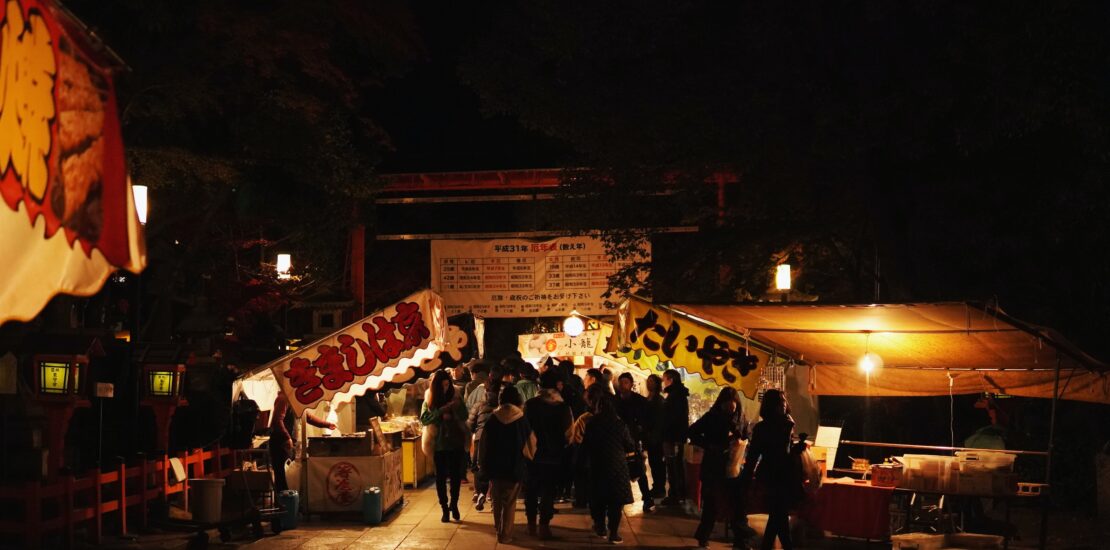
Street food is a significant aspect of Japanese culture and has a long history in the country. Japanese street food, or “yatai,” is often associated with festivals, night markets, and other outdoor events. Street food vendors offer a variety of traditional Japanese dishes, as well as international cuisine, and many have become popular among locals and tourists alike. Keep reading for a list of some popular Japanese street food dishes that you shouldn’t miss during your next trip to Japan!
Takoyaki
Takoyaki is a popular Japanese street food that originated in Osaka. It is a small, round, savory ball-shaped snack made from a batter of wheat flour, dashi broth, eggs, and green onions, filled with diced octopus, pickled ginger, and tempura scraps. Takoyaki is cooked on a special takoyaki pan, which has half-spherical molds, and is typically brushed with a sauce made from Worcestershire sauce, soy sauce, and sugar, and topped with mayonnaise, aonori (dried seaweed flakes), and katsuobushi (dried, fermented, and smoked bonito flakes).
Takoyaki is often considered a popular street food snack, its unique texture and flavor have made it a popular dish both domestically and internationally. In addition to the classic takoyaki, there are also various regional and seasonal variations of takoyaki, such as cheese-filled takoyaki or takoyaki with shiso leaves.
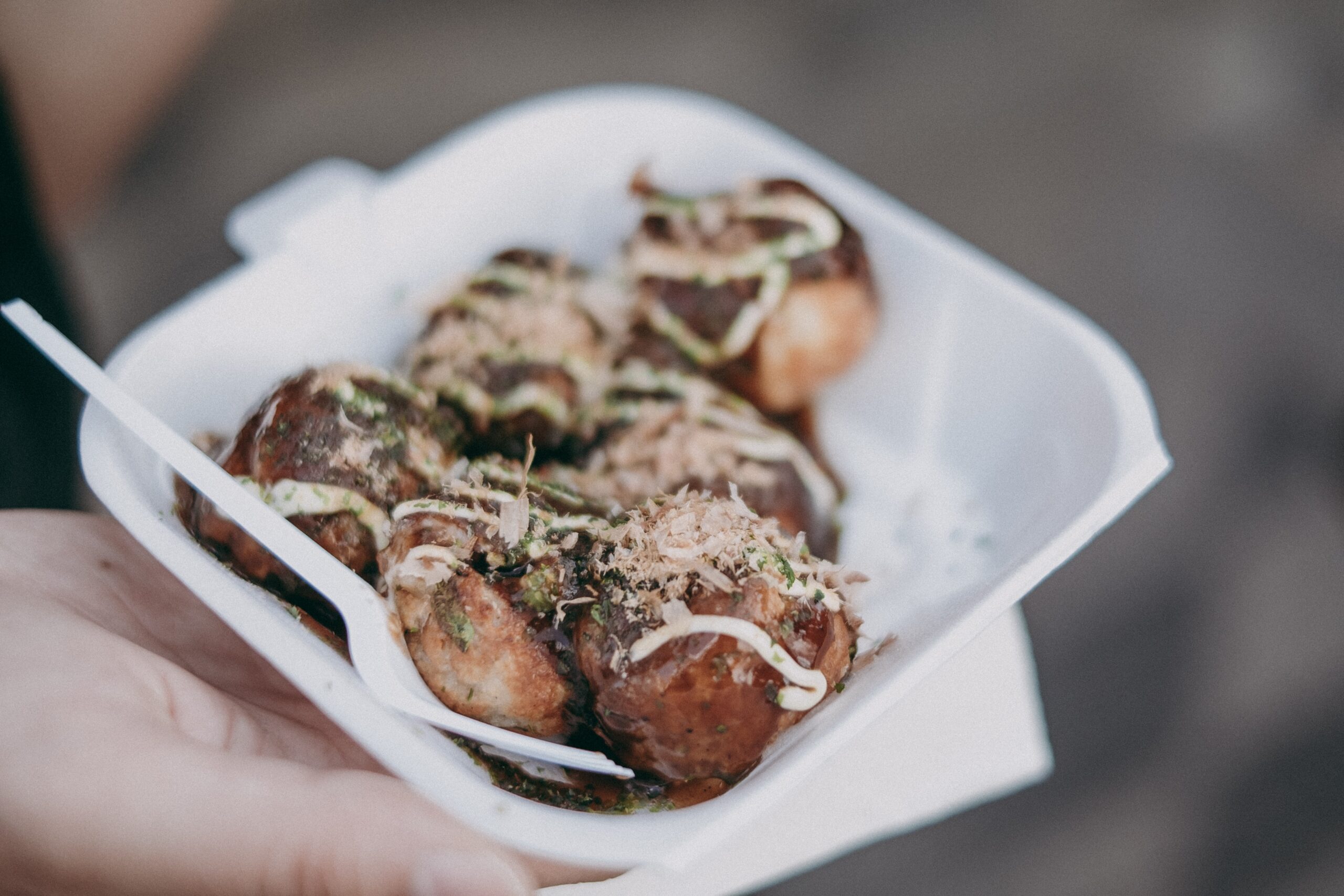
Yakisoba
Yakisoba is a popular Japanese stir-fried noodle dish that is often served at festivals, street food stalls, and in restaurants throughout Japan. The dish typically consists of Chinese-style wheat noodles stir-fried with vegetables such as cabbage, onions, and carrots, as well as meat such as pork or chicken, and flavored with a sauce made from Worcestershire sauce, oyster sauce, and soy sauce. Some variations of yakisoba also include seafood, such as shrimp or squid.
The noodles and other ingredients are cooked on a hot plate called a teppan, and are often garnished with aonori (dried seaweed flakes) and katsuobushi (dried, fermented, and smoked bonito flakes) before being served. Yakisoba is typically eaten with chopsticks and can be served as a main dish or as a side dish with other Japanese foods like gyoza or takoyaki.
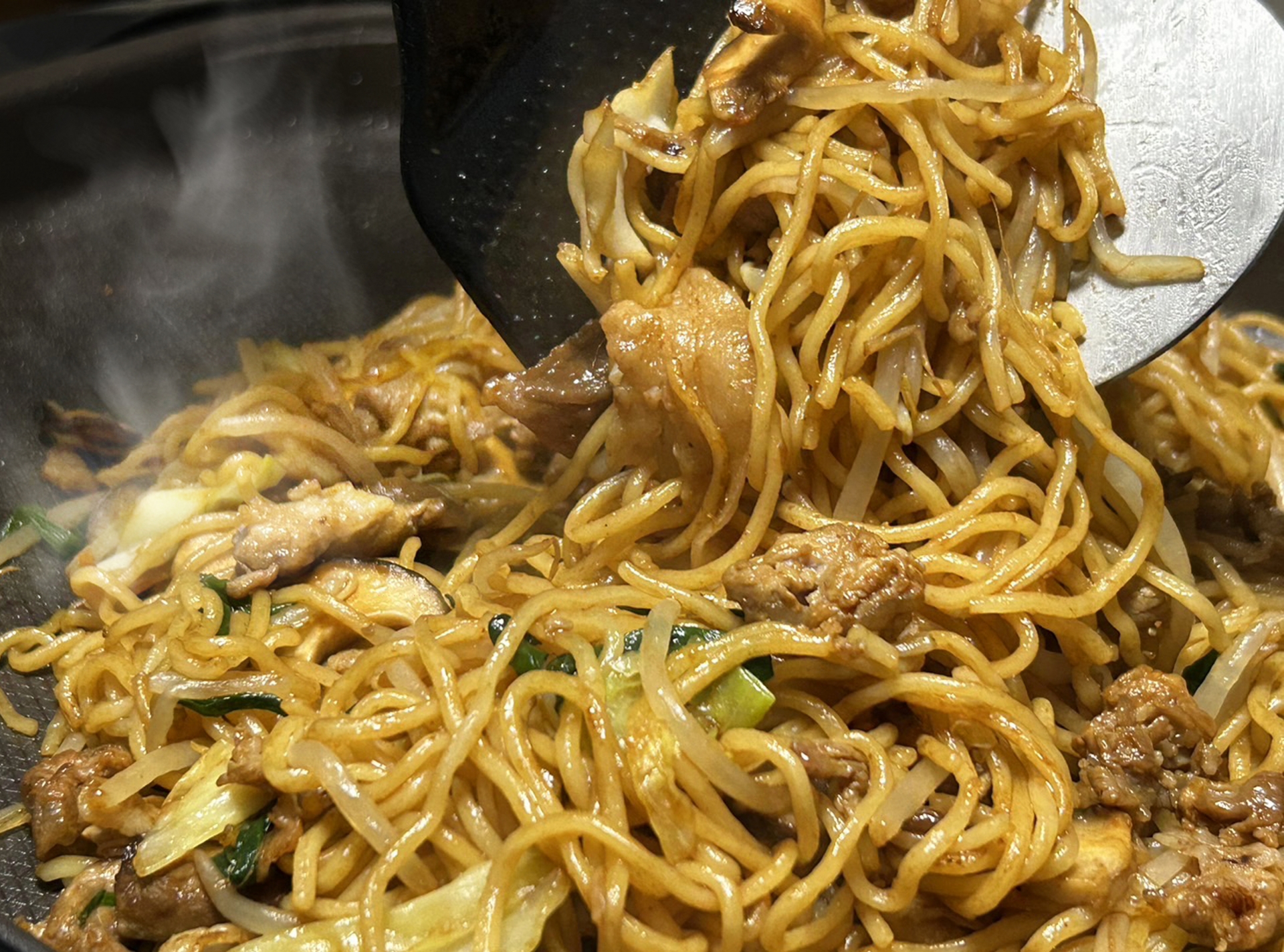
Okonomiyaki
Okonomiyaki is a savory Japanese pancake that is a popular street food and comfort food throughout Japan. The word “okonomiyaki” literally means “grilled as you like it,” and the dish is traditionally made with a variety of ingredients that can be customized to the diner’s preferences.
The base of okonomiyaki is a batter made from flour, eggs, dashi (a type of fish stock), and shredded cabbage. Additional ingredients such as pork belly, shrimp, squid, or octopus can be added to the batter before being cooked on a hot plate. Other toppings such as mayonnaise, okonomiyaki sauce (a type of sweet and savory sauce similar to Worcestershire sauce), dried seaweed flakes, and dried bonito flakes are then added to the cooked pancake.
Okonomiyaki is popular throughout Japan, and there are many regional variations of the dish. For example, Hiroshima-style okonomiyaki is made with layers of noodles, while Osaka-style okonomiyaki is typically thicker and fluffier. It is a popular street food and is often enjoyed in izakayas (Japanese pubs) and okonomiyaki specialty restaurants.
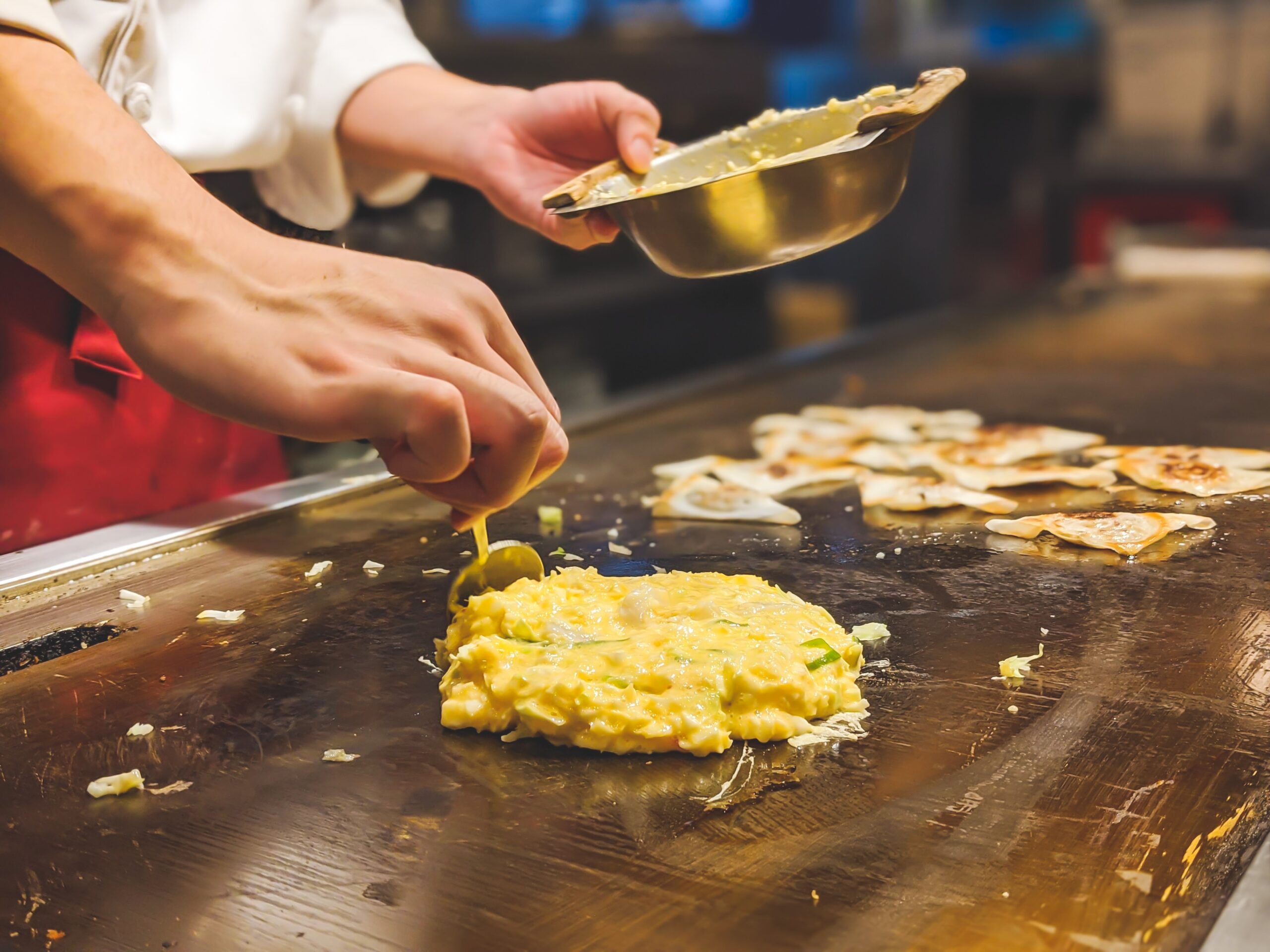
Yakitori
Yakitori is a popular Japanese grilled chicken skewer dish that is typically served in izakayas (Japanese pubs) and restaurants. The word “yakitori” literally means “grilled chicken,” and it is made by skewering small pieces of chicken on bamboo sticks and grilling them over charcoal until they are cooked through and slightly charred.
Traditionally, yakitori is seasoned with tare, a sweet and savory sauce made from soy sauce, sake, mirin, and sugar. The sauce is brushed onto the chicken while it is being grilled to add flavor and help caramelize the surface. Yakitori can also be seasoned with salt or other seasonings like garlic or ginger, depending on personal preference.
In addition to chicken, yakitori can also be made with other types of meat, such as beef, pork, or seafood. Vegetables like mushrooms, onions, and bell peppers can also be skewered and grilled alongside the meat.
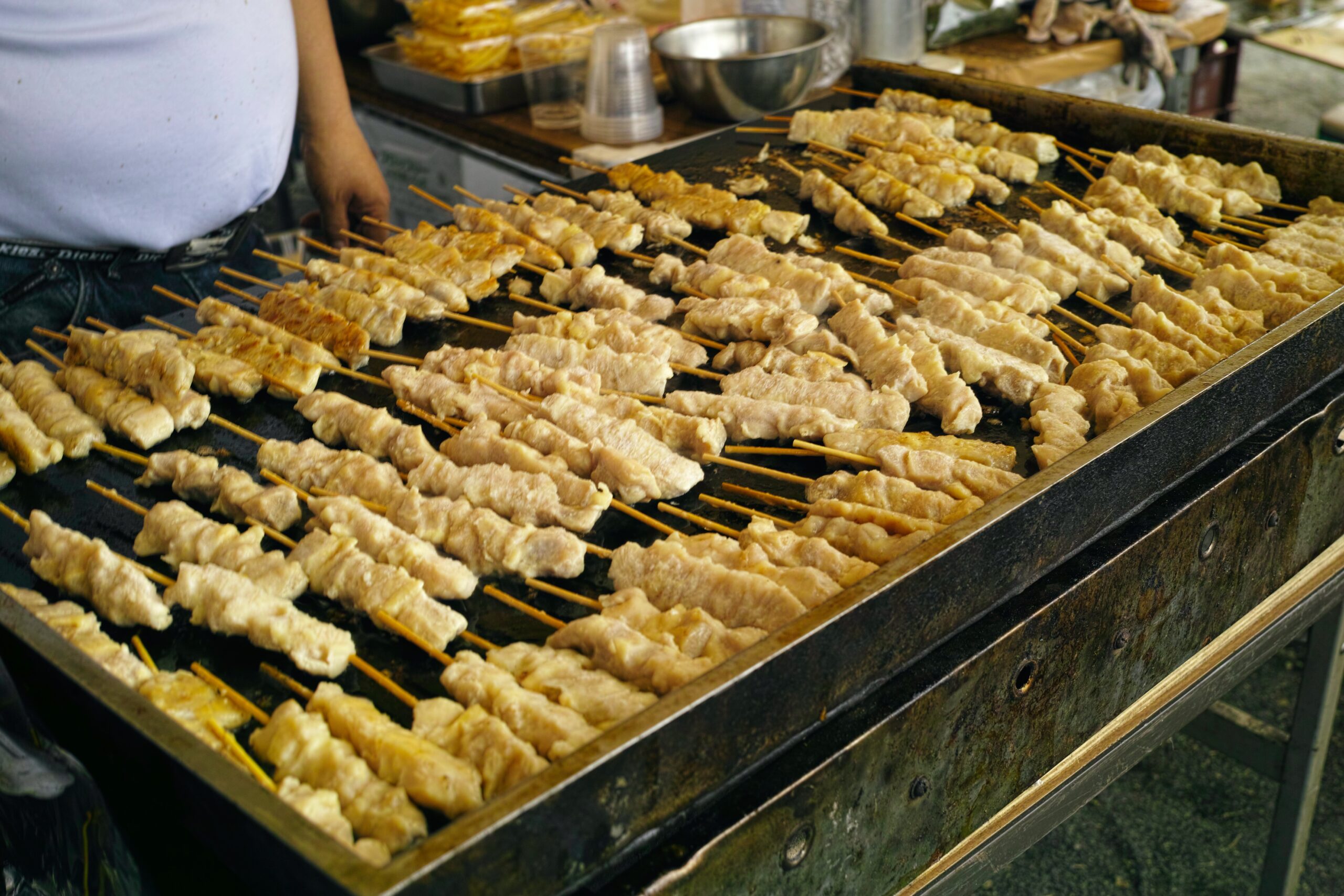
Taiyaki
Taiyaki is a Japanese fish-shaped cake that is a popular street food and snack throughout Japan. The word “taiyaki” means “baked sea bream,” but the cake is not actually made with fish. Instead, it is made from a pancake-like batter that is poured into a fish-shaped mold and cooked until it is golden brown and crispy on the outside and fluffy on the inside.
The most common filling for taiyaki is sweet red bean paste, which is made from mashed azuki beans and sweetened with sugar. Other fillings, such as custard, chocolate, or sweet potato, are also popular. Some vendors even offer savory fillings, such as cheese or sausage.
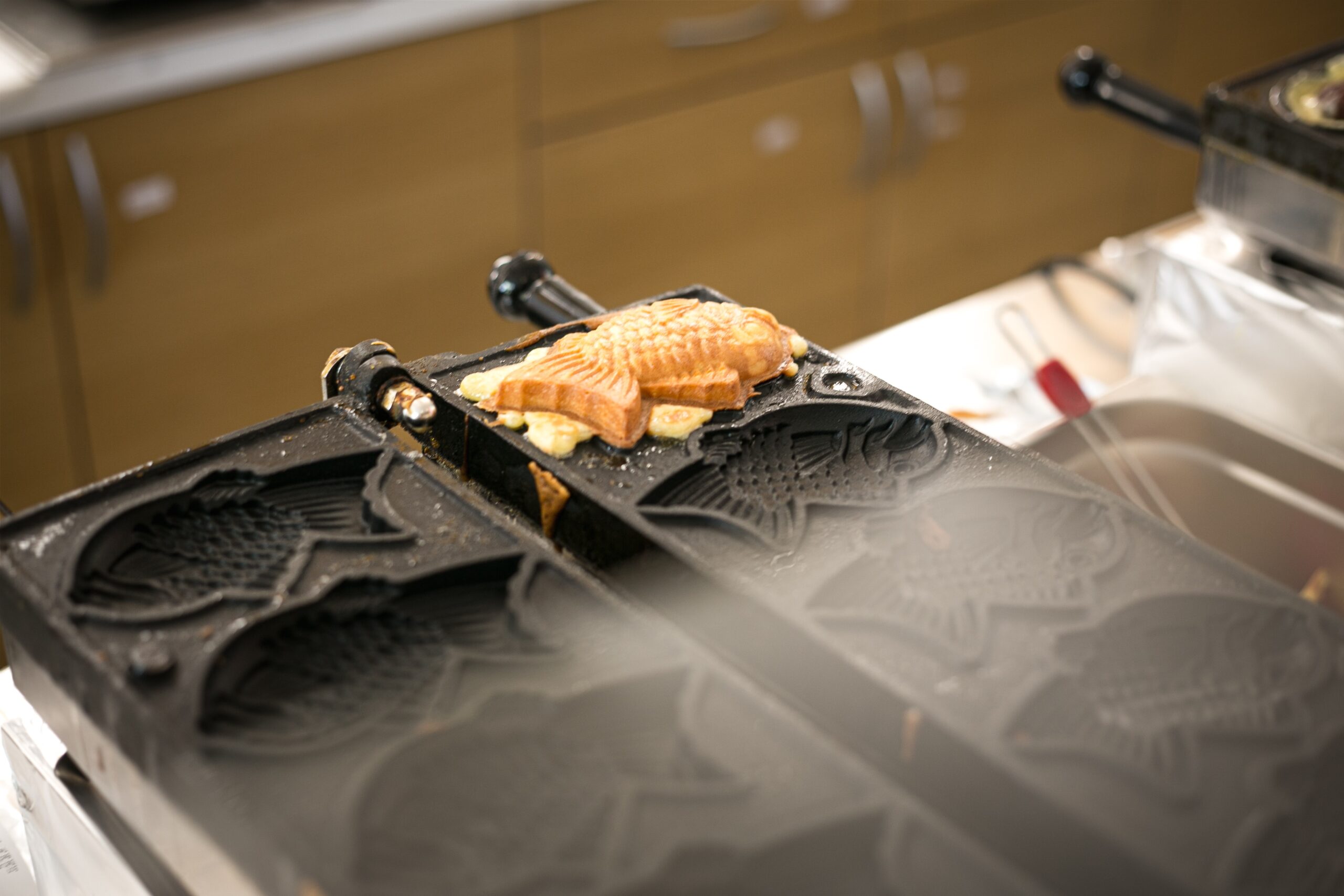
Kakigori
Kakigori is a popular Japanese dessert made from shaved ice that is flavored with sweet syrup and sometimes topped with condensed milk, fruit, or other sweet toppings. The name “kakigori” comes from the Japanese words for “shaved ice.”
To make kakigori, a block of ice is shaved into fine, fluffy snow using a special machine. The snow-like ice is then piled into a bowl or cup, and flavored syrup is poured over it. The syrup can be made from a variety of ingredients, such as matcha green tea, strawberry, melon, or even sweetened condensed milk.
In addition to syrup, kakigori can also be topped with sweetened azuki beans, fresh fruit, mochi (a type of sweet rice cake), or other sweet toppings. Some vendors even offer kakigori with a scoop of ice cream on top.
Kakigori is a popular summertime treat in Japan and is often sold at festivals, food stalls, and specialty shops. It is a refreshing dessert!

Japanese street food is deeply ingrained in Japanese culture and has played an essential role in the country’s culinary scene. It offers a convenient and affordable option for those on the go, and vendors take pride in their craft, offering a unique and interactive dining experience.
Related Articles
Warning: Undefined array key "sfsi_threadsIcon_order" in /home/veremosglobal/tokyoroomfinder.com/public_html/blog/wp-content/plugins/ultimate-social-media-icons/libs/controllers/sfsi_frontpopUp.php on line 165
Warning: Undefined array key "sfsi_blueskyIcon_order" in /home/veremosglobal/tokyoroomfinder.com/public_html/blog/wp-content/plugins/ultimate-social-media-icons/libs/controllers/sfsi_frontpopUp.php on line 170
Warning: Undefined array key "sfsi_bluesky_display" in /home/veremosglobal/tokyoroomfinder.com/public_html/blog/wp-content/plugins/ultimate-social-media-icons/libs/controllers/sfsi_frontpopUp.php on line 266



